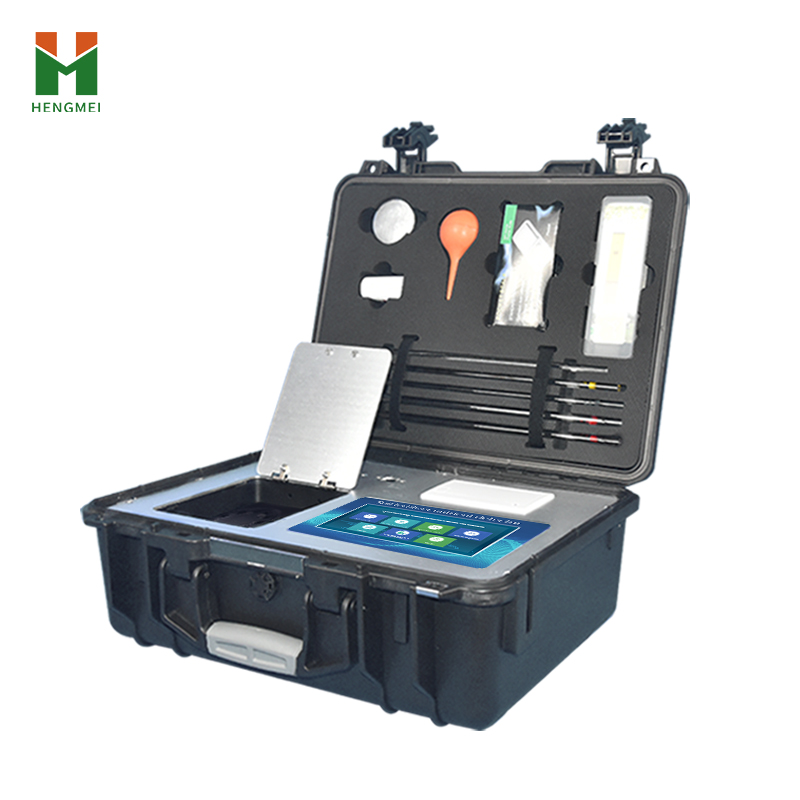Do you often have headaches in agricultural production due to excessive fertilization causing soil compaction and crop burning? Are you anxious about the weak growth and low yield of crops due to insufficient fertilization? In fact, the root of these problems lies in the lack of understanding of soil nutrient status, and soil nutrient detectors are the key to solving these problems. They can accurately grasp the "nutrient" status of the soil and provide reliable basis for scientific fertilization.

Technical advantages:
The technical advantages of soil nutrient detectors are very significant. It integrates various functions into one, without the need for users to customize accessories, and can flexibly perform mobile detection. Whether in the field or greenhouse, detection work can be carried out at any time, greatly improving the convenience of use. Equipped with the Android intelligent operating system, the main control chip adopts ARM Cortex-A7, RK3288/4-core processor, with a main frequency of 1.88GHz, making the instrument run faster and more stable, even for large amounts of data processing, it can easily handle.
In terms of detection efficiency, the solid-state design of six detection channels enables the instrument to quickly detect six samples at once, greatly improving detection efficiency and reducing detection costs. For growers, agricultural cooperatives, and others who need to batch detect soil samples, it is undoubtedly a good helper to improve work efficiency. Moreover, the built-in calibration function during the detection process, intelligent constant current and voltage stabilization, and automatic calibration of light intensity can ensure the accuracy of detection, making each set of detection data authentic and reliable.
More thoughtfully, the instrument is equipped with a crop expert fertilization system, which can calculate recommended fertilization amounts for over a hundred national agricultural economic crops, fruit trees, and other target yields, and scientifically guide agricultural production based on fertilization formulas. The results of soil testing formula fertilization can also be printed, including crop types, fertilizer types, target yields, total demand, and recommended fertilization plans, allowing users to easily follow the plan for fertilization at a glance.
In terms of data transmission and management, soil nutrient detectors also perform well. The instrument comes standard with WiFi wireless upload, 4G network transmission, and GPRS wireless remote transmission functions, which can quickly upload data; Simultaneously equipped with USB and Ethernet interfaces, data can be copied from a USB flash drive at any time to meet the data transmission needs in different scenarios. Built in large capacity memory, supports viewing all historical detection records and transferring all detection data. In addition, the instrument is also equipped with a smart cloud agriculture platform. After connecting to a wireless network, the detection data can be selectively or batch wirelessly uploaded, making it convenient for users to conduct long-term data management and visual analysis. Users can also log in to the cloud platform online with their mobile phones to view historical data and keep track of soil nutrient changes anytime, anywhere.
Application fields:
The application field of soil nutrient detector is wide. In agricultural planting, it can guide scientific fertilization, improve crop yield and quality; In agricultural research, it can provide accurate data support for soil nutrient research; In ecological environment protection, monitoring changes in soil nutrients can provide a basis for soil improvement and ecological restoration.
In short, soil nutrient detectors have become important equipment in the field of soil nutrient management due to their advanced technology, wide application, and significant effectiveness. It provides strong support for the scientific and precise production of agriculture, allowing every inch of land to unleash its potential.
Article address:https://www.soiltesting.cn/news2/124.html






